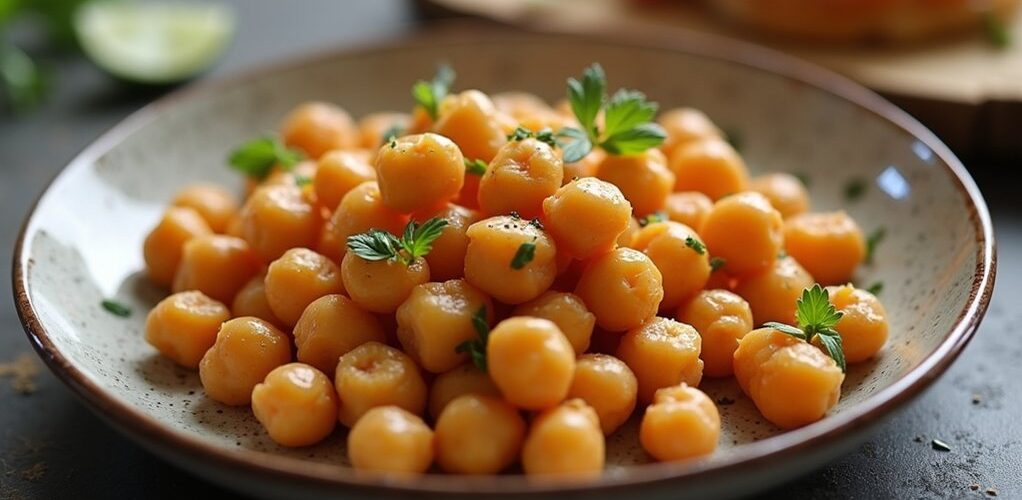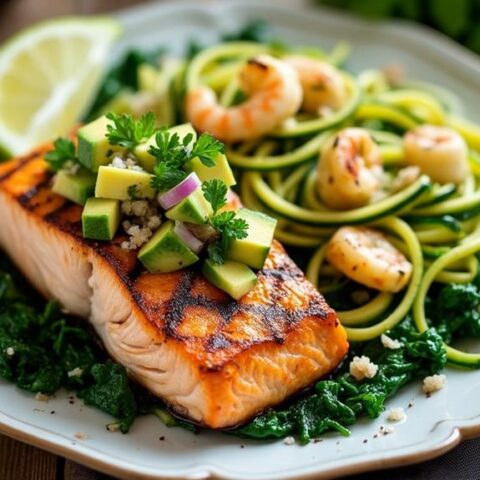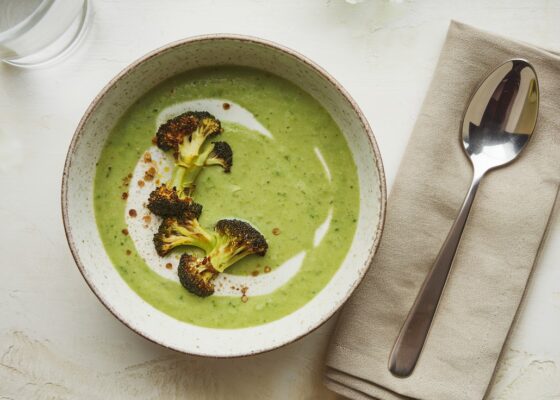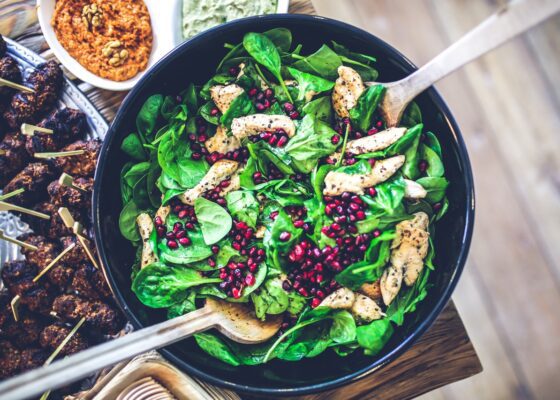
Chickpeas are not considered a low-carb food, containing 27.42 grams of carbohydrates per 100-gram serving, with 19.8 grams of net carbs after subtracting fiber. While their high carb content makes them challenging for strict low-carb diets, chickpeas offer significant nutritional benefits, including 20 grams of protein per half-cup and essential vitamins and minerals. Small portions can fit into a moderate-carb diet, and several lower-carb alternatives like black soybeans provide similar benefits with fewer carbohydrates. Understanding smart portion control and alternatives opens up new possibilities for enjoying legumes while managing carb intake.
Key Takeaways
- Chickpeas contain 27.42 grams of carbs per 100-gram serving, making them relatively high in carbohydrates for a low-carb diet.
- A half-cup serving delivers 25 grams of total carbohydrates, which may exceed daily limits for strict low-carb diets.
- The net carb content is 19.8 grams per 100 grams after subtracting 7.6 grams of dietary fiber.
- While not low-carb, chickpeas have a low glycemic index and provide significant protein and fiber benefits.
- Lower-carb alternatives include black soybeans (2g net carbs) and lupini beans (1g net carbs) per half-cup serving.
Understanding the Carbohydrate Content in Chickpeas
When considering chickpeas in a low-carb diet, understanding their carbohydrate composition becomes vital for making informed dietary choices. Chickpeas contain approximately 27.42 grams of carbs per 100-gram serving, with their dietary fiber content of 7.6 grams resulting in 19.8 grams of net carbs.
A half-cup serving of cooked chickpeas delivers about 25 grams of total carbohydrates, making them relatively high in carbs for those following strict low-carb regimens.
While chickpeas maintain a low glycemic index and can help regulate blood sugar levels when consumed in moderation, portion size remains essential for carb-conscious individuals.
As a moderate option in balanced diets, these legumes can be incorporated thoughtfully, but their substantial carb content requires careful monitoring for those tracking their daily carb intake.
Health Benefits Beyond the Carb Count
Although chickpeas contain a notable amount of carbohydrates, their impressive nutritional profile offers substantial health benefits that extend far beyond their carb content. The low glycemic index of chickpeas makes them an excellent choice for blood sugar management, while their rich fiber content promotes ideal digestive health. 1. Chickpeas deliver nearly 20 grams of protein per half-cup serving, supporting muscle maintenance and repair. 2. Their high fiber content, approximately 7 grams per half-cup, aids digestion and blood sugar regulation. 3. These legumes provide essential vitamins and minerals, particularly iron, which supports red blood cell production. 4. Regular consumption may reduce the risk of heart disease and certain cancers due to their antioxidant properties. This nutritional powerhouse demonstrates that focusing solely on carb count overlooks the significant health advantages chickpeas provide. Additionally, the improved insulin sensitivity seen with low glycemic index foods like chickpeas can be particularly beneficial for individuals managing diabetes.
Comparing Chickpeas to Other Legumes
A comparative analysis of legumes reveals significant variations in their carbohydrate content, with chickpeas positioned at the higher end of the spectrum. Containing approximately 27.42 grams of carbohydrates per 100 grams, chickpeas have a particularly higher carb count compared to several alternatives.
While they're high in fiber and offer healthy fats, their net carbs of 19.8 grams per 100 grams exceed those of many other legumes.
Despite their impressive fiber content and beneficial fats, chickpeas pack a higher net carb punch compared to their legume counterparts.
For those seeking lower-carb alternatives, lupini beans emerge as a standout option with just 1 gram of net carbs per half-cup serving. Similarly, black soybeans contain only 2 grams of net carbs per half-cup, while peas offer 14 grams of carbs per half-cup.
Lentils and kidney beans fall in the middle range, containing approximately 20 grams of carbohydrates per half-cup serving.
Smart Ways to Fit Chickpeas Into a Low-Carb Diet
Despite their higher carbohydrate content, chickpeas can be strategically incorporated into a low-carb diet through mindful portion control and creative recipe modifications. The key lies in balancing their nutritional benefits with careful serving sizes to maintain healthy options while managing net carbs per serving.
- Add small portions of chickpeas to salads and grain bowls, limiting serving sizes to 2-3 tablespoons for extra protein benefits without excessive carbs.
- Cook with chickpeas alongside lower-carb ingredients like cauliflower and leafy greens to create balanced meals.
- Prepare homemade hummus alternatives by blending chickpeas with vegetables to reduce the carbohydrate content per serving.
- Consider substituting traditional chickpea recipes with similar legumes like black soybeans or lupini beans when seeking lower-carb options while maintaining high fiber content.
- For those following a keto diet, it's important to focus on unprocessed foods to ensure better nutrition and avoid hidden sugars.
Low-Carb Alternatives to Chickpeas
When following a low-carb eating plan, several nutrient-rich alternatives can effectively replace chickpeas while maintaining similar textures and flavors in favorite recipes. Cauliflower stands out as a versatile low-carb alternative, containing just 1.1 grams of net carbs per half-cup serving, while edamame offers 5 grams of net carbs and serves as a good source of plant-based protein. Black soybeans provide comparable texture with only 2 grams of net carbs, making them suitable for soups and chili dishes. Lupini beans, high in dietary fiber and protein, contain merely 1 gram of net carbs per serving, perfect for creating low-carb hummus. Mushrooms round out these alternatives, offering minimal carbohydrates while delivering satisfying texture and rich flavor profiles in various dishes. For those seeking additional options, almonds offer 14 grams of fat and only 2.6 grams of net carbs per ounce, making them an excellent low-carb snack or meal component.
Frequently Asked Questions
Can I Eat Chickpeas on a Low Carb Diet?
While chickpeas offer protein and fiber benefits, their high carb content makes them challenging for low-carb diets. Individuals should limit portions or consider alternatives like cauliflower and black soybeans for meal planning.
Which Legumes Are Lowest in Carbs?
Lupini beans rank lowest in carbs among legumes at 1g net carbs per half-cup, followed by black soybeans at 2g, green beans at 4g, edamame at 5g, and peas at 8g.
Do Chickpeas Spike Blood Sugar?
Chickpeas have a low glycemic index and high dietary fiber, preventing significant blood sugar spikes. Their protein content and legume benefits make them suitable for diabetes management and healthy meal planning.
How Many Carbs in a Bowl of Chickpeas?
A bowl (1 cup) of boiled chickpeas contains approximately 45 grams of total carbohydrates, with 12 grams of net carbs after subtracting fiber. Canned varieties typically have similar nutritional content.
Conclusion
While chickpeas contain more carbohydrates than many low-carb foods, they offer significant nutritional benefits that make them worth considering, even on a carb-conscious diet. Their high fiber content, protein, and essential nutrients can be balanced within a well-planned meal strategy. By controlling portion sizes and pairing chickpeas with low-carb ingredients, health-conscious individuals can enjoy this versatile legume while maintaining their dietary goals.










No Comments